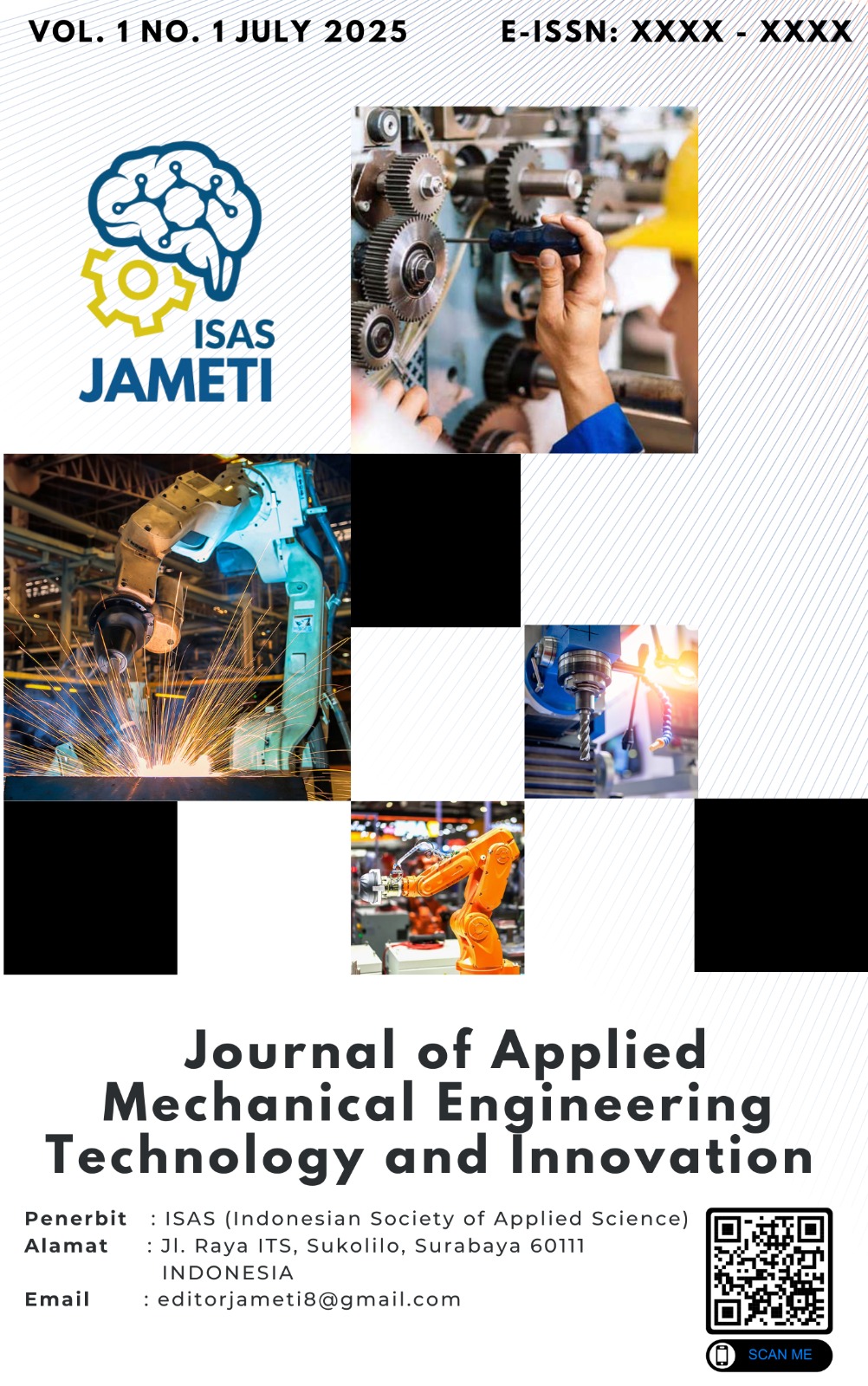THE INFLUENCE OF TEMPERATURE AND SCREW ROTATION SPEED ON DIAMETER IRREGULARITY IN PLASTIC EXTRUSION USING RECYCLED PLA
DOI:
https://doi.org/10.52158/jameti.v1i1.1314Keywords:
Recycled PLA, Extrusion, Screw Rotation Speed,, Temperature, Filament, 3D PrintingAbstract
This research investigates the effect of extrusion temperature and screw rotation speed on the diameter irregularity of filaments produced from recycled polylactic acid (PLA) using a single screw plastic extruder. The study addresses the growing demand for sustainable 3D printing materials by reprocessing failed or unused PLA prints into usable filament. Experimental variables included three temperature settings (150°C, 160°C, and 170°C) and three screw rotation speeds (20 rpm, 30 rpm, and 40 rpm), producing a total of 360 diameter measurements. The results show that both temperature and screw rotation speed significantly influence diameter consistency, with screw speed having a more dominant effect. The optimal condition for achieving the target filament diameter of 1.75 mm was found at 170°C and 40 rpm, yielding a predicted diameter of 1.7378 mm with a desirability score of 0.97888. These findings confirm the potential of recycled PLA as a viable material for consistent filament production when proper extrusion parameters are applied. The test was done by using minitab software to aid the research analysis.
Downloads
References
Herianto, S. I. Atsani, and H. Mastrisiswadi, “Recycled Polypropylene Filament for 3D Printer: Extrusion Process Parameter Optimization,” IOP Conf. Ser. Mater. Sci. Eng., vol. 722, no. 1, 2020, doi: 10.1088/1757-899X/722/1/012022.
M. L. Sonjaya and M. F. Hidayat, “Construction and Analysis of Plastic Extruder Machine for Polyethylene Plastic Waste,” EPI Int. J. Eng., vol. 3, no. 2, pp. 132–137, 2021, doi: 10.25042/epi-ije.082020.07.
M. R. Hasan, I. J. Davies, A. Pramanik, M. John, and W. K. Biswas, “Potential of recycled PLA in 3D printing: A review,” Sustain. Manuf. Serv. Econ., vol. 3, no. October 2023, p. 100020, 2024, doi: 10.1016/j.smse.2024.100020.
S. Budin and M. Jaafar, “Comparative study on mechanical properties of virgin and recycled polylactic acid aging in natural weathering and seawater environment,” Polym. Bull., vol. 79, no. 7, pp. 4841–4858, 2022, doi: 10.1007/s00289-021-03756-0.
R. Aly, O. Olalere, A. Ryder, M. Alyammahi, and W. A. Samad, “Mechanical Property Characterization of Virgin and Recycled PLA Blends in Single-Screw Filament Extrusion for 3D Printing,” Polymers (Basel)., vol. 16, no. 24, 2024, doi: 10.3390/polym16243569.
F. Ebrahimi and H. Ramezani Dana, “Poly lactic acid (PLA) polymers: from properties to biomedical applications,” Int. J. Polym. Mater. Polym. Biomater., vol. 71, no. 15, pp. 1117–1130, 2022, doi: 10.1080/00914037.2021.1944140.
H. Ponsar, R. Wiedey, and J. Quodbach, “Hot-melt extrusion process fluctuations and their impact on critical quality attributes of filaments and 3d-printed dosage forms,” Pharmaceutics, vol. 12, no. 6, pp. 1–15, 2020, doi: 10.3390/pharmaceutics12060511.
E. Mitsoulis and S. G. Hatzikiriakos, “Rheological properties related to extrusion of polyolefins,” Polymers (Basel)., vol. 13, no. 4, pp. 1–12, 2021, doi: 10.3390/polym13040489.
W. Roland and J. Miethlinger, “Heuristic Analysis of Viscous Dissipation in Single-Screw Extrusion,” Polym. Eng. Sci., vol. 51, no. 7, pp. 1–16, 2018, doi: 10.1002/pen.
















